Read a part of a business plan and draw the graph of the rate of inflation.
Let us look briefly at the way inflation has developed during the period 2001-2006. On the graph in front of you, the horizontal axis represents the years from 2001 to 2006 divided up into six-monthly periods. The vertical axis shows the percentage rate of inflation from zero to 25. Let us now look in detail at the development.
If we start with 2001, you can see that at the beginning of the year inflation stood at 5%. It increased steadily over the next 12 months to 8%. The situation improved at the beginning of 2002 and it levelled off for a six months period. The improvement continued and inflation decreased gradually by 2% during the rest of the year. Unfortunately, as you can see, the decline was not maintained and over the next six months inflation rose slightly and reached 9% by the middle of 2003. Then things went bad - I’m sure you will remember how inflation went up dramatically to 17% during the next 12 months and the effects this had on our exports. After a drop of 3% over the second half of 2004 when we all thought that things were improving, inflation increased rapidly until it reached a peak of 24% in the middle of 2005. This marked the low point for us and the high point for inflation. It then fell to 20% by the end of 2005 and levelled off until the middle of 2006. Now let’s look at our results during the same period…
What kind of movement do the verbs below describe? Match them to the symbols. Use some symbols more than once.
double gain drop increase rocket
decrease fall halve level off triple
hit the bottom fluctuate improve peak rise
plummet recover soar collapse stabilise
|
 1) 1)
|
 2) 4 2) 4
2
|
  3) 3)
|
 4) 4)
|
 5) 4 5) 4
2
|
  6) 6)
|
7)
|
 8) 8)
|


|

|
 6 6
3
|
|
G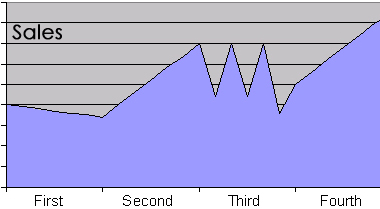 . Describe the graphs. Use the expressions from task I. . Describe the graphs. Use the expressions from task I.
Events that influenced sale:
1st Quarter: Low consumer demand
2nd Quarter: Price drop
3rd Quarter: Price war with competitors
4th Quarter: Strong holiday buying
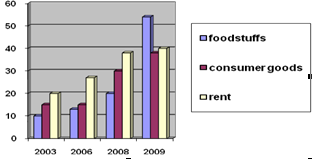
WORD FILE
Unit 2 Module 1
|
to found/to establish
to destroy
to rule
efforts
to invade
to divide into
zero
nought
nil
nothing
point
vast territory
to lie
to extend
to cover
to border on
in terms of
population
according to
census
two-headed eagle
appear
symbolize
superpower
contain
approximately
|
STATISTICS
pie chart
bar chart
graph
table
to stand at
to remain constant
to increase/an increase of
to rise/a rise of
to go up
to grow
to decrease/a decrease of
to fall/a fall of
to drop/a drop of
to decline/a decline of
to reach a peak of
to level off at
to fluctuate
sharply/dramatically
rapidly
slightly
gradually
steadily
at the beginning of
at the end of
in the middle of
|
by the beginning of/
by the end of/ by the middle
during/for/over
by 50 %
almost 50%
nearly/about/around 50%
approximately/roughly 50%
more than/over/above 50%
less than/ under 50%
exactly 50%
up to 50%
to double
to gain
to rocket
to halve
to triple
to hit the bottom
to improve
to peak
to plummet
to recover
to soar
to collapse
to stabilise
|
Module 2 The Republic of Tatarstan
“You wouldn’t believe it,
but I would rather live in Mamadysh
rather than in Venetia, Rome or Naples…“
From a letter of Leo Tolstoy
17 March 1786
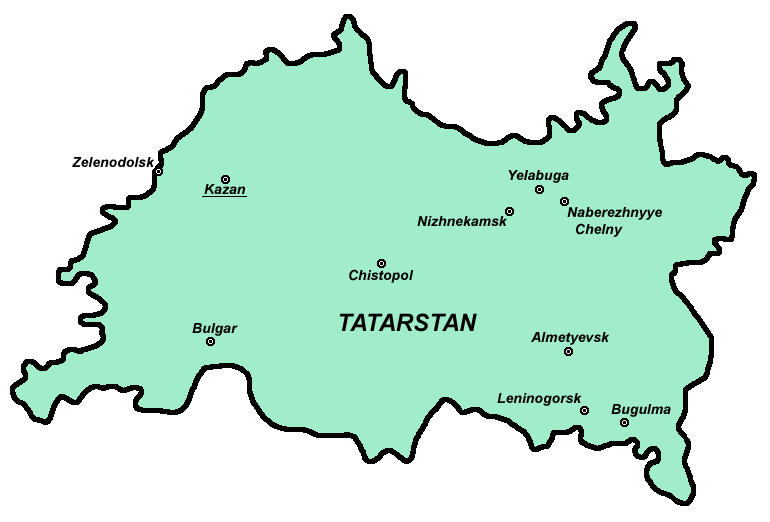
PREVIEW
What do you know about Tatarstan? Do the quiz and say which of the data were surprising for you?
1) Tatarstan is situated approximately 800 km … of Moscow.
east
west
north
2) Islam was established as a state religion in ….
1552
922
1147
3) During the years of the World War II, Boris Pasternak used to live in ….
Naberezhniye Chelny
Chistopol
Bavly
4) Kazan was captured by the troops of Emel'yan Pugachev in ….
1774
1147
1552
5) The second largest town of Tatarstan is ….
Bugulma
Chelny
Nizhnekamsk
6) On … Mintimer Shaimiyev was elected the first President of the Republic of Tatarstan.
25th March, 1990
25th March, 2005
12th June, 1991
7) There are about … small lakes in the Republic.
8,000
4,500
1,000
8) The Constitution of the Republic of Tatarstan was adopted on ….
September 5, 1991
November 6, 1992
June 12, 1990
READING: TATARSTAN
Read and translate the text.
History
Tatarstan is one of the most industrialized republics of the Russian Federation in terms of population and economic potential. The process of inhabiting the territory of the republic began at the time of the early Palaeolithic age (about 100,000 years ago). In the 8th – 9th centuries, the tribes of ancient Bulgars, ancestors of the modern Tatars, began to populate the Volga Region. The first state – the Volga-Kama Bulgaria – was set up at the end of the 9th - beginning of the 10th centuries. In the 13th century this territory became a part of powerful Zolotaya Orda (Golden Hord) State. The collapse of the Golden Hord in the 30-40s of the 14th century resulted in the formation of new states including the Kazan Khanate. Kazan became the capital of this state. The Kazan Khanate ceased its existence in October 1552, when troops of Ivan the Terrible (Ivan IV) conquered Kazan. As the Tatar Autonomous Soviet Socialist Republic it was established on 27th May, 1920 on the territory of the former Kazan Province. Seventy years later, on 30th August, 1990 the Declaration of State Sovereignty of the Republic was signed.
Geographical position
The Republic of Tatarstan is located in the center of the East-European Plain where Europe meets Asia and two large rivers - the Volga and the Kama – carry their joint waters to the Caspian Sea. The Republic of Tatarstan covers the territory of 67,800 sq.km and stretches for 290 km from North to South and for 460 km from West to East. Climate in the Republic is moderate-continental with warm, sometimes hot summers and moderate cold winters.
The capital
The capital of the Republic is Kazan, its industrial, commercial and cultural center, a city of more than 1.1 mln people. There are 19 cities and towns and 3,100 settlements in the Republic. The total population of the republic is about 3.8 mln people. Peculiarity of the Republic of Tatarstan and its culture is in that they reflect two different civilizations: eastern and western, and two different religions: Moslem and Christian (Orthodox). Tatarstan is a multinational republic, as it is home to representatives of more than 100 nationalities: the Tatars (over 50%), the Russians (nearly 42%), the Chuvashes, the Mordvinians, the Mari, the Udmurts, etc.
The government
The head of the government in Tatarstan is the President. Tatarstan’s unicameral State Council is elected for 5 years as well and has 100 seats: 50 are for representatives of the parties, other 50 are for deputies from the republic’s localities. The official languages are Tatar and Russian. The state emblem represents a winged snow leopard with a round shield on his side. The national flag is a horizontal tricolor with stripes of green, white and red.
Industrial regions
The main industries of the Republic are oil production, petrochemistry, aircraft industry, mechanical engineering and instrument-making. The territory of the Republic is divided into several economic regions.
Old industrial Northwest region with Kazan and Zelenodolsk as its centre. Major industries of the region are machine-building, instrument-making, chemical and light industries. OAO Kazanorgsintez is one of the giants of petrochemical center of Tatarstan. It produces more than a half of the whole polyethylene production of the country. Produce quality meets the European standards and is exported to many countries. Kazan Automotive Industrial Enterprise (KMPO) has more than 60 years experience in aircraft engine production. It has been producing 65% of all engines for civil planes, as well as the engines for bombers and helicopters.
New industrial Northeast region with Naberezhniye Chelny and Nizhnekamsk as its centre. Major industries of the region are power engineering, automobile and chemical industries. OAO Kama Automobile Works (KamAZ), situated in the city of Naberezhniye Chelny, is considered to be the best Russian exporter of heavy-duty trucks. These large capacity lorries work under any road and climatic conditions. KamAZ has 6 enterprises located in Russia, the Ukraine and Kazakhstan. The products of KamAZ are used in over 83 countries of Europe, Asia, Africa and Latin America. As for Nizhnekamsk, it is the main chemical center of Tatarstan. OAO Nizhnekamskneftekhim is the largest producer and exporter of petrochemical products in Eastern Europe and one of the largest budget-forming enterprises of the Republic of Tatarstan. OAO Nizhnekamskshina is one of the leading tyre manufacturers in the CIS.
The Southeast oil-extracting region. It is oil that made our republic well-known all over the world. The main oil-producing towns are Almetyevsk, Leninogorsk and Bugulma. Tatneft, located in Almetyevsk (a city of about 151,000 people) is the main oil-producing company of the Republic. Since 1994, it exists as a joint-stock company.
The North, Central, South and Southwest parts of the Republic are rural agricultural regions. Agricultural sector employs more than 16% of economically active population. Agriculture of the Republic covers the local needs in the basic food stuffs. 4.5 mln hectares of land are cultivated which is equal to 67% of the Republic’s territory. Main grain crops are wheat, rye, barley, oats and buckwheat. Fodder crops cover 36% of the sowing area. The Republic is also well-known for its cattle-breeding. Production of such staples as meat, potatoes, milk, eggs per capita in Tatarstan is 15-60% higher than in Russia.
The Republic of Tatarstan ranks number one among the Volga regions in terms of foreign trade turnover and foreign economic activity. The foreign relations of Tatarstan have expanded especially over the past decade. It has signed agreements with Hungary, Turkey, Bulgaria, Lithuania, Germany, Australia, etc. The main export products are crude oil, petrochemical items, compressors, optical devices, trucks, automobile tyres and spare parts.
Match the words with their definitions.
to cease
|
a basic type of food that is used a lot
|
to locate
|
a period of 100 years
|
conquest
|
connected with or like the countryside
|
agricultural
|
a thick rubber cover that fits round the wheel of a bicycle, car, or other vehicle
|
to inhabit
|
to stop happening or continuing
|
century
|
a particular period of history
|
unicameral
|
a feature that only belongs to a particular person, thing, place, etc.
|
ancestor
|
to put or build smth in a particular place
|
staple
|
having only one main governing body
|
rural
|
relating to farming
|
age
|
the act of taking control of a country, city, etc. by force
|
tyre
|
to live in a particular place
|
peculiarity
|
a person in your family who lived a long time ago
|
Answer questions to the text. Make up a dialogue on the basis of this information.
What are the main industries of the Republic?
What economic regions is the republic divided into?
What giant represents the old industrial Northwest region? What does it produce?
What are the main industries of the new industrial Northeast region?
What is KamAZ? Where is it located? What are the main oil-producing towns?
What parts of the Republic are known as rural agricultural regions?
What are the main grain crops of the Republic?
What can you tell about the foreign relations of Tatarstan?
What are the main export products of the RT?
LANGUAGE SKILLS: EXPRESSING OPINIONS. AGREEING & DISAGREEING
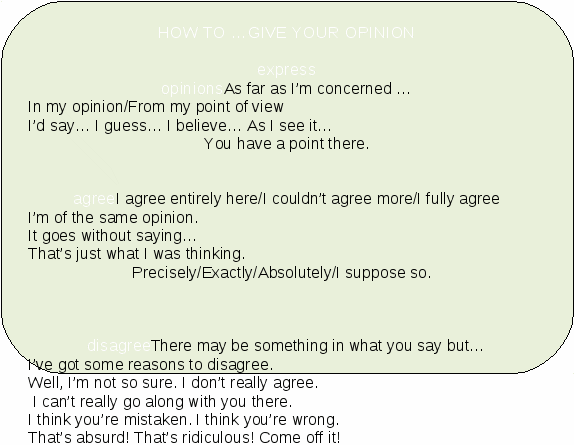
A. Make up short dialogues expressing your opinion, agreeing or disagreeing. Use the prompts given below.
e.g. I believe that oil made our Republic well-known all over the world.
There may be something in what you say but there are also other things that contributed to the fame and well-being of the Republic.
Prompts: knowing foreign languages; making friends when travelling; studying in a foreign country; making Tatarstan a tourist attraction; trying new cuisine; investing in new technology.
Work in pairs. Write down 3 true and 3 false statements about the Republic of Tatarstan using the information from the text. Read the statements to each other, and agree or disagree with them using expressions from the Language skills box above.
GRAMMAR: PASSIVE VOICE
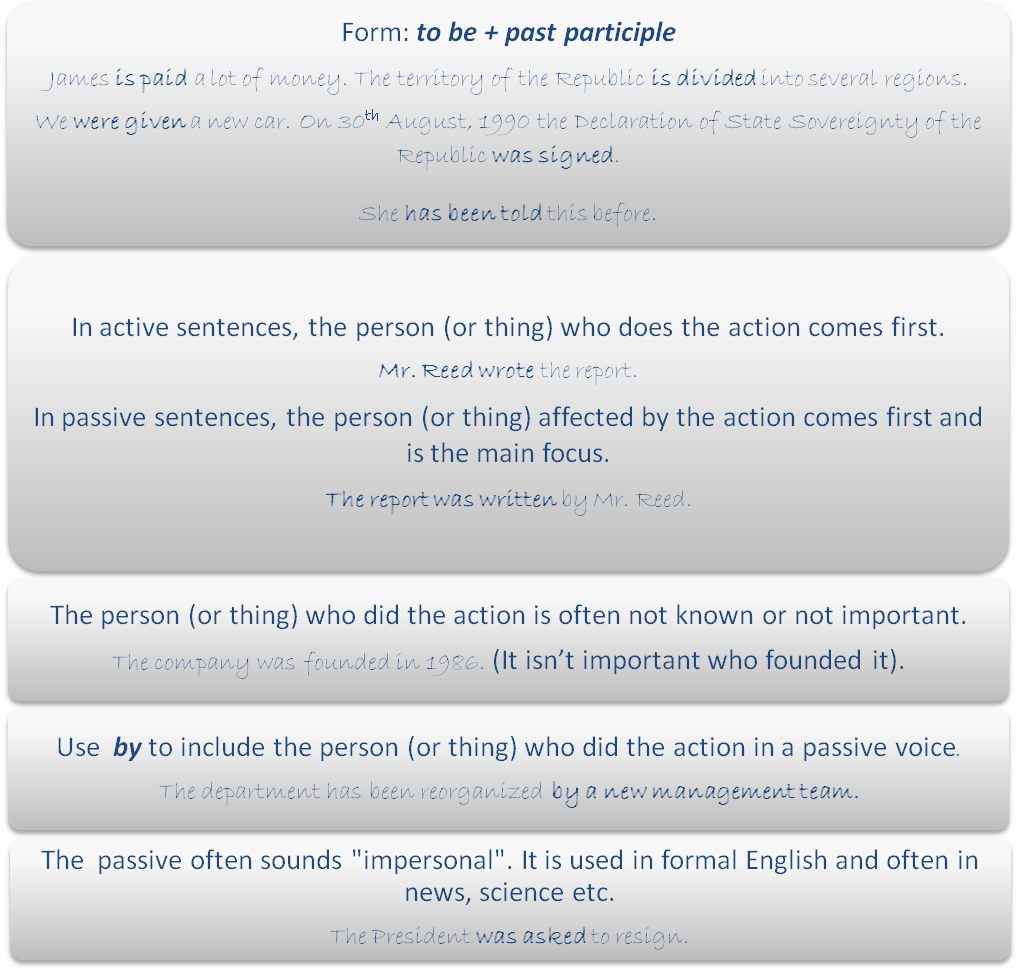
Open the brackets.
Present Simple
am/is/are +Ved/V3
|
Applicants (shortlist) and (interview).
Modern production (characterize) by the high level of automation.
Jobs (create) where society needs them.
|
Past Simple
was/were+ Ved/V3
|
Help (give) to small farmers.
Many enterprises (set up) in 1990s.
|
Present Perfect Simple
has/have been + Ved/V3
|
The agreement (sign) by our countries.
The problems (solve) immediately.
|
Modal verbs
can/may/must/ be +Ved/V3
|
The data (can/regard) as conclusive.
Preparation for the project (must/ complete) this week.
This (may/call) a local problem.
|
Future Simple
will be + Ved/V3
|
New laboratory (provide) with the most modern equipment.
|
Future Perfect
will have been + Ved/V3
|
About a quarter of all electricity (generate) by atomic power plants.
|
B. Find passive forms in the text about Tatarstan and analyse their tense form.
C. Rewrite the sentences in passive voice.
1) We have cancelled the meeting. 2) We asked Mrs. Fry to chair the meeting. 3) She pays a lot of money. 4) They should not interrupt production at any other time. 5) Management makes the conditions more comfortable for workers. 6) The government increased workforce dramatically.7) Investors put a lot of money into production.
D. Put the verbs in brackets into passive voice.
After the Russian revolution of 1905 Tatars (to allow) to revive Kazan as a Tatar cultural center.
The city has a beautiful citadel, which (to declare) the World Heritage Site in 2000.
In the beginning of 1990s most of Central Kazan (to cover) by wooden buildings, usually consisting of two floors.
Kazan State University (to establish) in 1804.
Russian and Tatar languages widely (to speak) in the city.
Kazan (to serve) by Kazan Airport, which (to locate) approximately 30 kilometers from the city centre.
Until recently there was Kazan-2 Airport at the eastern end of the city, but it (to pull down) as a new hippodrome (to build) in its place.
Information on the efficiency of those enterprises (to require).
The irrigated lands (to saw) mostly with cotton.
The desire to expand friendly ties (to express) by both sides.
WRITING: MAKING UP AN ITINERARY
An itinerary is a detailed list of what you will be doing and where you will be while you are away. It includes information about transportation methods, places you will be staying, attractions you will be visiting, meetings you will be attending. Be sure to include names, addresses and any other contact information you have. Take a copy with you and leave one at your office and with family and friends.
Read the step-by-step guide on making an itinerary:
Choose where you are going to go on holiday, i.e. Moscow, Yelabuga, Naberezhnye Chelny, New York, London, etc.
Find some information about amazing sites, places to visit, things to do.
Write all of the places down and choose which one best suits you and your fellow traveller (some may prefer to visit historical sites, others may want to visit shopping malls).
After you have chosen where you want to go, choose the type of transportation you are going to get around, i.e. car, taxi, train, plane, bus, boat, etc.
Consider an appropriate place to stay, i.e. hotel, hostel, motel, house, etc.
Group all of the information you have gathered, now you are ready to write down an itinerary.
A. Write an itinerary for a business trip of your partner who is in oil business. You may wish to include all oil-extracting cities of Tatarstan. Don’t forget about an entertainment programme. Use the example below.
Itinerary of William Smith, trip to New York, 23-26 November
Date
|
departure/
from (time and place)
|
arrival/
to (time and place)
|
Flight no.
|
Info
|
Sunday
23 November
|
9:05 AM London Heathrow
|
11:35 AM New York, JFK
|
UA 9238
|
take taxi to Lowell Hotel 28 east sixty third Street (28 km, 20 minutes drive)
|
|
|
|
|
|
Monday
24 November
|
|
|
|
take taxi to CitiLife, 315 Bleecker Street, New York, NY 10014, phone: 212-349-6726 (100 km, 60 minutes drive)
|
|
8:15 AM
|
12:30 PM room no C3.
|
|
Meeting with Mr. Braun, Mrs. Green, Mr. Yoko, Mr. Walker and Mrs. Mankowich
|
|
|
|
|
|
|
12:30 PM
|
1:30 PM company restaurant
|
|
lunch with Mr. Braun and Mr. Bright (senior account manager)
|
|
1:30 PM
|
4:00 PM room no. B20
|
|
Meeting with the marketing department. Host: Mrs Johnson
|
|
4:00 PM
|
7:00 PM
|
|
Free time, visiting sights, gifts shopping
|
|
7:00 PM
|
10:00 PM
|
|
Dinner with Mr. Braun. He will pick you up at the hotel
|
|
|
|
|
|
Tuesday
25 November
|
8:15 AM
|
2:30 PM room no. B23
|
|
Report to Mr. Braun. Guided tour of the factory, including lunch
|
|
|
|
|
|
|
3:00 PM
|
4:00 PM room no. A55
|
|
Meeting with the new PR-manager, Mrs. White (successor of Mr. Gefferson).
|
|
|
|
|
|
Wednesday
26 November
|
8:30 AM New York, JFK
|
12:00 AM London, Heathrow
|
UA 9082
|
Take a taxi to the airport (28 km, 20 minutes drive)
|
Create an advertisement that advertises your itinerary. The advertisement should include some pictures of places that are in the itinerary, but you may create it however you think would be most effective.
WORD FILE
Unit 2 Module 2
|
industrialized republic
to inhabit
tribe
troop
to populate
age/century
ancient
collapse
to cease one’s existence
to conquer
conqueror
conquest
to number … people
to be established
on the territory of …
to sign (agreements)
to be situated = to be located
plain
to cover the territory of … sq.km.
to stretch for … km from… to…
moderate-continental
settlement
total population
peculiarity
to reflect
nationality
religion: moslem/ christian (orthodox)
multinational
civilization
to be home to smb
to elect smb for the term of … years
party
|
unicameral/bicameral
representative (n, a)
deputy
to be divided into regions
giant (a)
to meet standards
to export/to import
to produce = to manufacture
enterprise
budget-forming enterprise
to work under any conditions
leading
agglomeration
CIS countries
to exist
joint-stock company
rural
agriculture; agricultural
to employ
economically-active population
main = major
to cover the needs
hectare
sowing area
per capita
foreign trade turnover
to expand
to exist
to extract
to exceed
to cultivate
to be equal to
industries = branches of industry
oil production
|
oil-extracting
petrochemistry
aircraft industry
mechanical engineering/engineering/ machine-building
automobile industry/ motor-car industry
instrument-making
machine-tool industry
chemical industry
light industry
power engineering
manufacturing/processing
mining
items of produce
oil/crude oil/petrochemical items
polyethylene
aircraft engines (for civil planes, bombers and helicopters)
heavy-duty trucks/large-capacity lorries
compressors
optical devices
automobile tyres (AmE tires)
spare parts
grain crops (wheat, rye, barley, oats and buckwheat)
fodder crops
cattle-breeding
basic food stuffs/staples (meat, potatoes, milk, eggs)
|
Module 3 Kazan
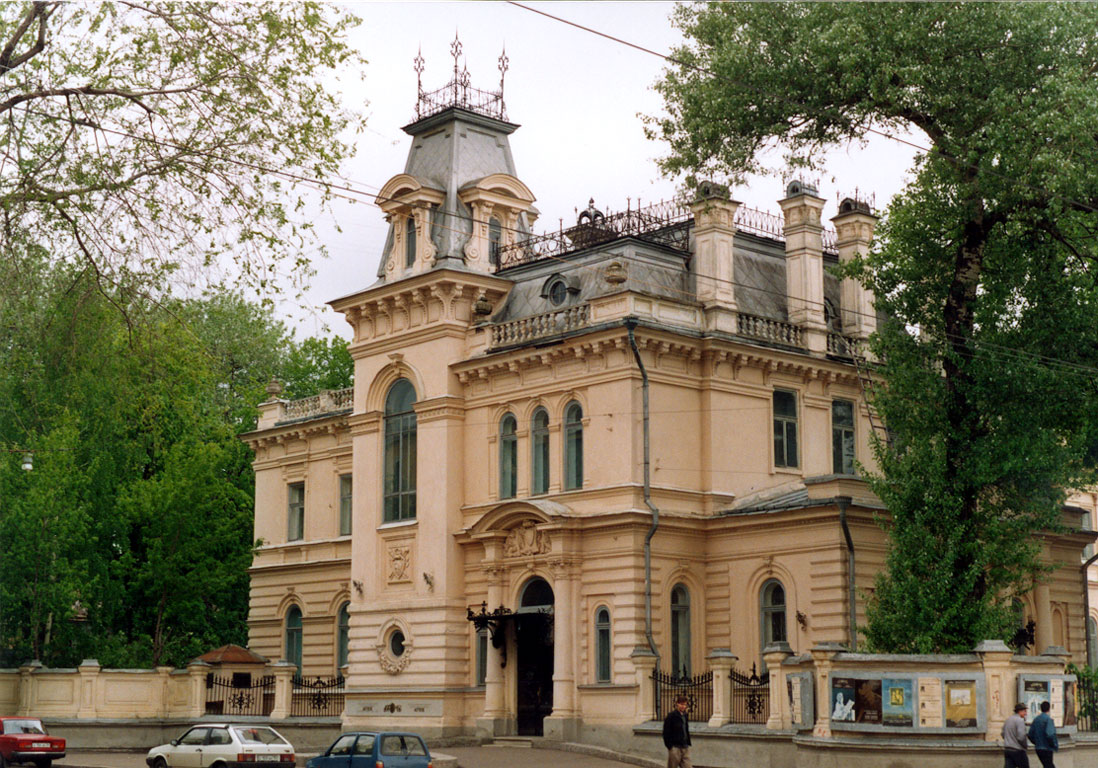 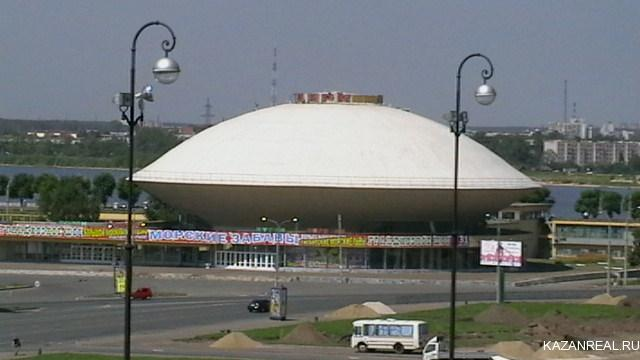
PREVIEW
Tell if you agree or disagree with these quotations.
“When you look at a city, it’s like reading the hopes, aspirations and pride of everyone who built it.”
Hugh Newell Jacobsen
“A great city is not to be confounded with a populous one.”
Aristotle
B. How well do you know Kazan and its history? Do the quiz and check your knowledge.
In 1446 Kazan became the capital of ….
Khanate of Kazan
the Golden Horde
the Bolgar state
In 1774 Kazan was destroyed by ….
the troops of Yemelyan Pugachev
great fire
troops of Ivan the Terrible
Which building is not on the territory of the Kazan Kremlin?
the Kul-Sharif mosque
the Spasskaya Tower
Nurullah mosque
The Peter and Paul Cathedral was built to commemorate the visit of …. to Kazan.
Peter the Great
Catherine the Great
Alexander I
Kazan state emblem represents …
a snake
a horse
a panther
Match these famous people of Kazan and their field of work.
-
N.A. Mislavskiy
|
medicine, anatomy
|
V.M. Bekhterev
|
chemistry
|
K. Nasyri
|
physics, mathematics
|
A.M. Butlerov
|
history, ethnography
|
P.F. Lesgaft
|
physiology
|
A.Ye. Arbuzov
|
psychiatry, psychology
|
Kh.M. Mushtari
|
organic chemistry
|
LANGUAGE SKILS: ASKING THE WAY
Match phrases 1)–8) with pictures a)-f), some of them can be used more than once:
1) Go straight ahead/ carry on. 5) Turn right.
2) Walk along the street. 6) Turn left at the crossroads.
3) Take the first (second) turning on the right. 7) Take a bus to…
4) Get off the bus at … 8) It’s next /across from/ opposite/beside.
|
                    
?
 
Bus
     a) b) c) d) e) a) b) c) d) e)
Bus
 f) f)
B. Practice the following conversation with a partner using the substitutions in the box.
A: Do you know where I can get a cup of coffee?
B: Sure. You could try the Capital cafe.
A: Where’s that?
B: It’s on Pushkin Street near to Clocks on Bauman Street.
A: Thanks.
B: No problem.
get some clothes get some cat food buy some milk buy some jewelers
grab a hamburger get some aspirin see a movie buy a book mail a letter
buy some CDs have a snack
|
GRAMMAR1: PREPOSITIONS OF PLACE AND DIRECTION
Preposition
|
Use
|
Examples
|
above
|
higher than smth
|
The picture hangs above my bed.
|
across
|
from one side to the other side
|
You mustn't go across this road here.
There isn't a bridge across the river.
|
along
|
in a line; from one point to another
|
They're walking along the beach.
|
among
|
in a group
|
I like being among people.
|
behind
|
at the back of
|
Our house is behind the supermarket.
|
below
|
lower than smth
|
Death Valley is 86 metres below sea level.
|
beside
next to
|
near
|
Our house is beside the supermarket.
|
between
|
smth/smb is on each side
|
Our house is between the supermarket and the school.
|
by
|
near
|
He lives in the house by the river.
|
in front of
|
the part that is in the direction it faces
|
Our house is in front of the supermarket.
|
inside
|
opposite of outside
|
You shouldn't stay inside the castle.
|
opposite
|
on the other side
|
Our house is opposite the supermarket.
|
out of
|
leaving smth
|
The cat jumped out of the window.
|
outside
|
opposite of inside
|
Can you wait outside?
|
over
|
above smth/smb
|
The cat jumped over the wall.
|
round
|
in a circle
|
We're sitting round the campfire.
|
through
|
going from one point to the other point
|
You shouldn't walk through the forest.
|
to
|
towards smth/smb
|
I like going to Australia.
Can you come to me?
|
under
|
below smth
|
The cat is under the table.
|
up
|
from low to high
|
He went up the hill.
|
C. Fill in the gaps with appropriate prepositions.
1) I found the key … the cushion. 2) Her office is … those stairs. 3) A lamp hung … the table. 4) The earth goes … the sun. 5) We parked our car … the sports hall. 6) It’s easy to find – there’s a church just … my house. 7) There was a low brick wall … our garden and the field beyond. 8) We’re driving … Follyfoot Road. 9) Would you like me to help you … the road? 10) The cat ran out from … the tree. 11) James walked … without looking in my direction. 12) She stood … and walked … the window. 13) The ball went flying … the window.
GRAMMAR 2: USE OF PREPOSITIONS IN, AT, ON
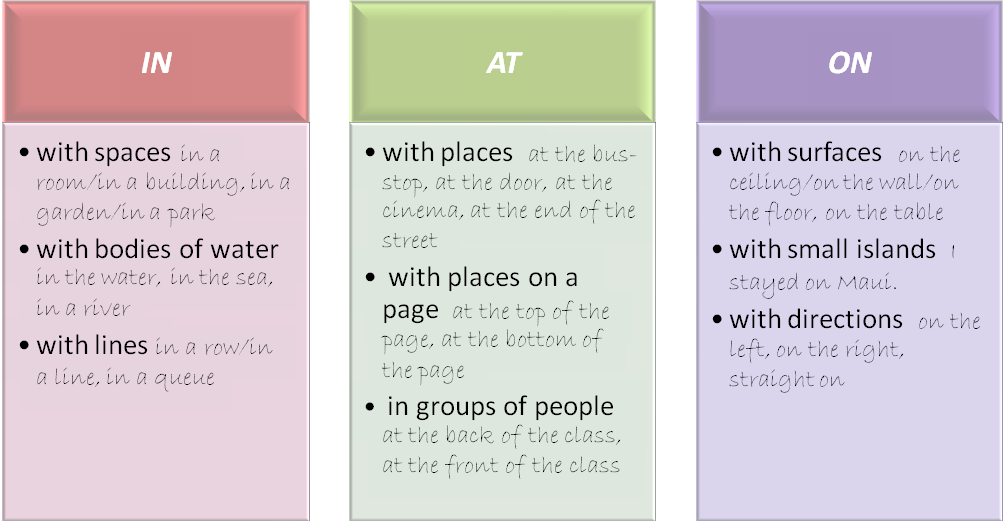
NB We say 'in the corner of a room', but 'at the corner (or 'on the corner') of a street'.
We say 'in the front/in the back' of a car.
We say 'at the front/at the back' of buildings/groups of people.
|
 Скачать 18.07 Mb.
Скачать 18.07 Mb. . Describe the graphs. Use the expressions from task I.
. Describe the graphs. Use the expressions from task I. 
































 a) b) c) d) e)
a) b) c) d) e)  f)
f) 













